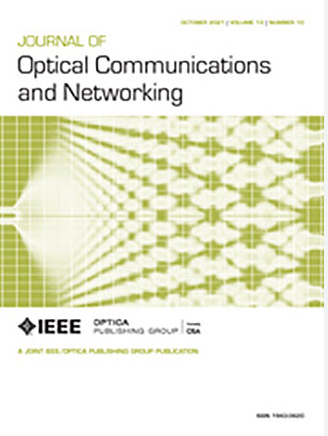Decentralized key distribution versus on-demand relaying for QKD networks
IF 4.3
2区 计算机科学
Q1 COMPUTER SCIENCE, HARDWARE & ARCHITECTURE
引用次数: 0
Abstract
Quantum key distribution (QKD) allows the distribution of secret keys for quantum-secure communication between two distant parties, vital in the quantum computing era in order to protect against quantum-enabled attackers. However, overcoming rate-distance limits in QKD and the establishment of quantum key distribution networks necessitate key relaying over trusted nodes. This process may be resource-intensive, consuming a substantial share of the scarce QKD key material to establish end-to-end secret keys. Hence, an efficient scheme for key relaying and the establishment of end-to-end key pools is essential for practical and extended quantum-secured networking. In this paper, we propose and compare two protocols for managing, storing, and distributing secret key material in QKD networks, addressing challenges such as the success rate of key requests, key consumption, and overhead resulting from relaying. We present an innovative, fully decentralized key distribution strategy as an alternative to the traditional hop-by-hop relaying via trusted nodes, where three experiments are considered to evaluate performance metrics under varying key demand. Our results show that the decentralized pre-flooding approach achieves higher success rates as application demands increase. This analysis highlights the strengths of each approach in enhancing QKD network performance, offering valuable insights for developing robust key distribution strategies in different scenarios.去中心化密钥分发与QKD网络的按需中继
量子密钥分发(QKD)允许在两个远程方之间分发量子安全通信的秘密密钥,这在量子计算时代至关重要,以防止量子攻击者。然而,克服量子密钥分配中的速率距离限制和建立量子密钥分发网络需要在可信节点上进行密钥中继。这个过程可能是资源密集型的,需要消耗大量稀缺的QKD密钥材料来建立端到端密钥。因此,一种有效的密钥中继方案和端到端密钥池的建立对于实际和扩展的量子安全网络至关重要。在本文中,我们提出并比较了用于在QKD网络中管理、存储和分发密钥材料的两种协议,解决了诸如密钥请求的成功率、密钥消耗和中继导致的开销等挑战。我们提出了一种创新的、完全分散的密钥分发策略,作为通过可信节点的传统逐跳中继的替代方案,其中考虑了三个实验来评估不同密钥需求下的性能指标。研究结果表明,随着应用需求的增加,分散式预驱方法的成功率更高。该分析强调了每种方法在增强QKD网络性能方面的优势,为在不同场景中开发健壮的密钥分发策略提供了有价值的见解。
本文章由计算机程序翻译,如有差异,请以英文原文为准。
求助全文
约1分钟内获得全文
求助全文
来源期刊
CiteScore
9.40
自引率
16.00%
发文量
104
审稿时长
4 months
期刊介绍:
The scope of the Journal includes advances in the state-of-the-art of optical networking science, technology, and engineering. Both theoretical contributions (including new techniques, concepts, analyses, and economic studies) and practical contributions (including optical networking experiments, prototypes, and new applications) are encouraged. Subareas of interest include the architecture and design of optical networks, optical network survivability and security, software-defined optical networking, elastic optical networks, data and control plane advances, network management related innovation, and optical access networks. Enabling technologies and their applications are suitable topics only if the results are shown to directly impact optical networking beyond simple point-to-point networks.

 求助内容:
求助内容: 应助结果提醒方式:
应助结果提醒方式:


